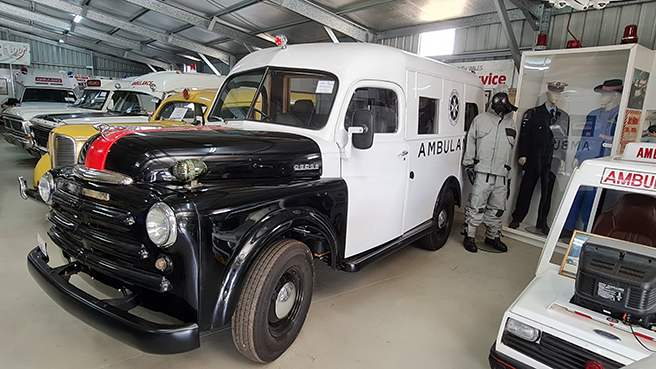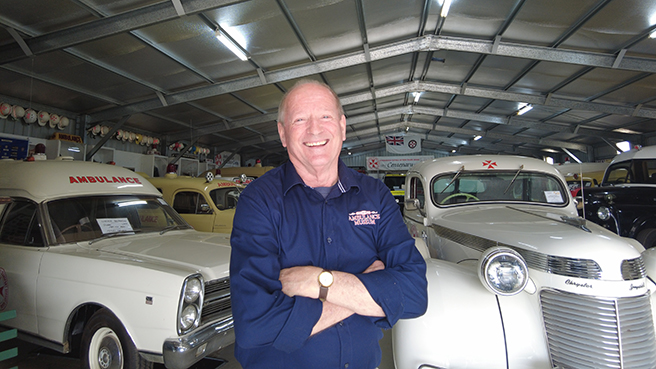
The town of Temora nestled on the northern edge of the Riverina region is a surprising location for a huge collection of NSW Ambulance vehicles and equipment.
As you walk through the crowded floor of the Temora Ambulance Museum, you can’t help but be amazed by the number of immaculately preserved historic ambulances.
There’s a 1938 Chrysler Imperial Boot Loader, the “Q van” from the 1960s – the first specialised rescue vehicle built in Australia – and many more.
The museum grew out of the passion of a local motor mechanic, the late Eddie Sams, whose restoration of one ambulance, an old FJ Holden, turned into a collection and eventually, into today’s museum.
“It’s a wonderful story to be able to tell and I feel privileged to be a part of telling the story,” Museum Manager Bill Speirs said.

As well as ambulances, there are uniforms, rescue equipment, photographs, and records. The whole exhibition presents a comprehensive record of the development and achievements of the NSW and ACT ambulance services. In fact there’s so much material, Bill currently has to store 140 cubic metres of it off site.
Thankfully, a major upgrade to the museum is a step closer to reality after a grant from NSW Government department Create NSW. The grant has funded a project that has developed a masterplan for the museum.
“This project will enable us to begin addressing the competing imperatives of protecting a large, state-significant collection, including numerous vulnerable large objects, while curating the collection to provide a much more engaging and rewarding visitor experience,” Bill said.
“Stage 3 of the museum will comprise secure and appropriate storage for the growing collection and allow the creation of a publicly accessible, comprehensive and interactive exhibition space.”
